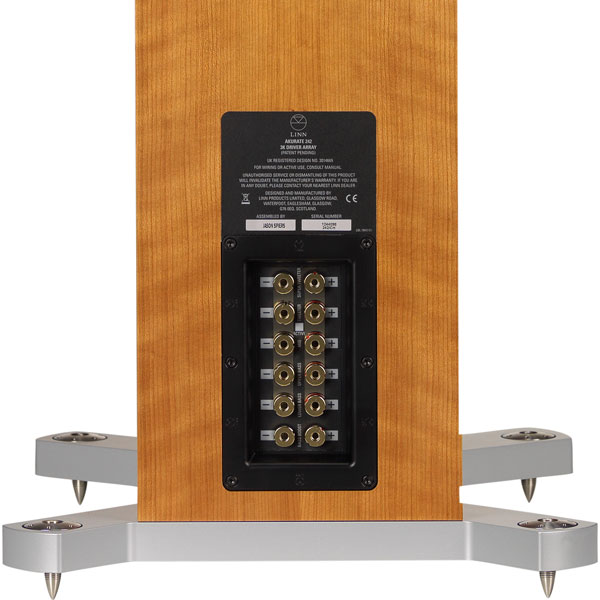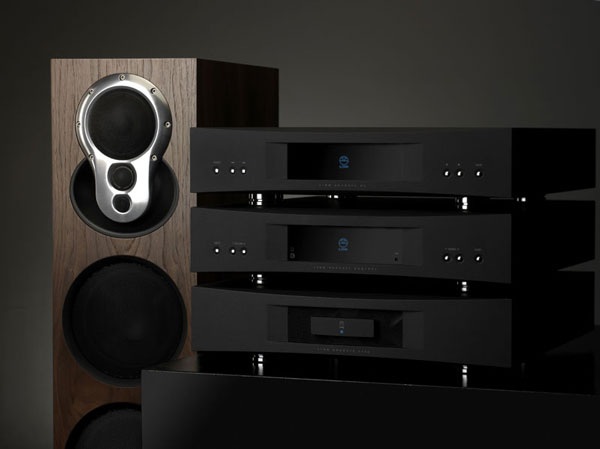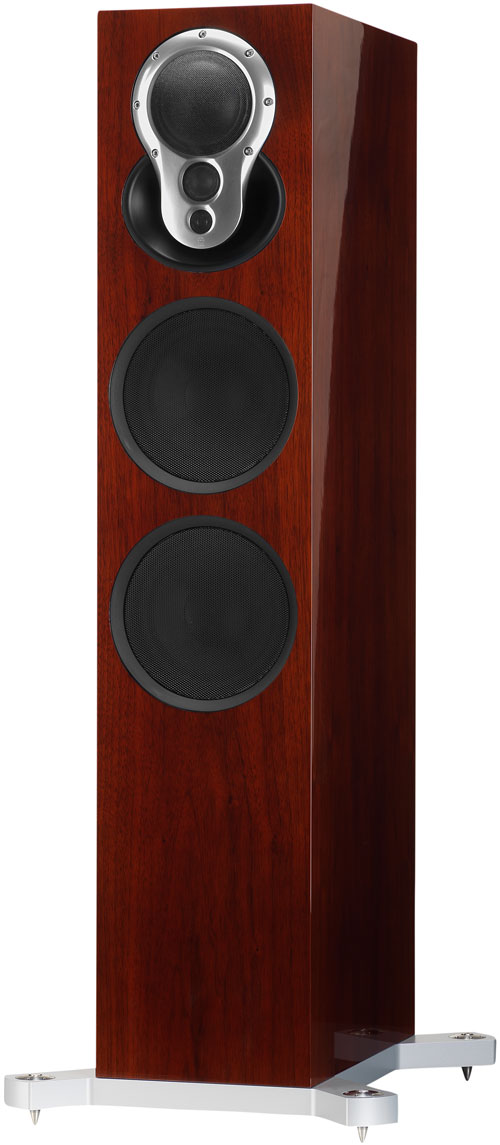You may have read my review of the very excellent Linn Akurate DS digital streamer/DAC, Akurate Kontrol preamp and 4200 amp in the June 2011 edition of Dagogo. I liked the components very much – especially the Akurate DS, which proved to be a fabulous digital front end. I had reluctantly removed the Linn components from the system and was packing them up when Constantine called to tell me to hold on to them since Linn was going to send me the additional components necessary to assemble a complete Akurate Aktiv system. I have only heard fully active systems at shows, so the prospect of having one in my own home was very exciting.
You are here on the map
Let’s first get some perspective and understand where a fully active (“Aktiv”) Akurate system falls in the pantheon of Linn components and systems.
Akurate represents the component range immediately below Linn’s top Klimax line. It’s sound quality is well beyond the Majik line despite the fact that the Majik line is as good or better than many will ever own. You can get a basic Akurate system and be very happy, but then you can step the system up by adding amplifiers to bi-amp, tri-amp, quad-amp and quint-amp the speakers. A complete Akurate Aktiv system includes the Akurate DS digital streamer/DAC, Akurate Kontrol preamplifier, two Akurate 4200 4-channel amps (4 channels for upper and lower bass, and 4 channels for midrange and treble), one Akurate 2200 2-channel amp (for the super tweeter), and the Akurate 242 five-way bass reflex floor standing speakers. Also included are the special modules needed to change the crossover characteristics of the amps, as well as all of the cables needed to connect all of those components together.
Now this is a lot of stuff – not to mention a lot of technology – to assemble, so Linn’s U.S. distributor, TC Group Americas, also sent Darrin Kavanagh, who is their VP of residential sales. No, Darrin did not come in the box. Darrin said that it would take a few hours to get everything assembled, so he was scheduled to arrive at my home about 10:00am so he could get it all done in time to leave for his return flight out of O’Hare by mid-afternoon. Of course, nothing can be that easy, and my suburb suffered a power outage the day before Darrin’s scheduled arrival. I assumed power would be restored within a few hours, but of course I was wrong, and Darrin had to assemble the entire system using a flashlight and the dim light that came into the room. He completed the assembly without the benefit of being able to test the system out before leaving for the airport. If it were me, I would have been a wreck, but Darrin kept up his good humor all day while he patiently assembled the system in the semi-dark and answered my questions about Linn’s history and philosophy.
What Linn believes
Let’s talk a bit about that history and philosophy. Linn began as an offshoot of Castle Precision Engineering (Glasgow) Ltd., and many of the methods and processes of that company form the philosophy behind the production of Linn’s audio components. It was founded in 1973 by Ivor Tiefenbrun, who designed and produced the famous Sondek LP12 turntable. In 1975, Linn patented its isobaric loading principle, and launched the Isobarik loudspeaker. Linn’s first CD player, the Karik, was released in 1993 – 11 years after the CD first became available, and Linn claimed that it waited that long to sell a CD player that offered performance worthy of the Linn name. The Klimax DS was introduced in 2007, with the Akurate DS following in 2008.
Throughout this time Linn has championed the position that the most important component in the musical chain is the source, since the signals produced by the source determine the ultimate quality of the rest of the reproduction chain. This was true with the Sondek as well as currently with its DS digital front ends.
Linn believes in open standards, basing its digital systems on UPnP standards so developers can create new apps and services to work with Linn systems . As Linn says on its website, you can “use a traditional remote control, or the latest handheld gadget. Stick to our Kinsky software or download an app. You can use any combination of controllers or apps you like, we don’t mind.” As a result, I used several different iPad apps to control the system, as well as Linn’s own Kinski software from my main server.
Let’s look at the individual components
I’m not going into all the details of all of the individual components. That would take several pages by itself, and I’ve already got a ton to tell you about. Instead, I suggest that you go to Linn’s website, which has very comprehensive technical information about its products. I also strongly recommend that you refer to my June 2011 article in Dagogo on the Akurate DS and Kontrol to see the myriad of features they each offer. Suffice it at this momemt to say, a) the DS will play pretty much anything that is playable through a computer, b) the Kontrol is similar to traditional high-end preamps and is designed to pass a signal without altering it, and c) the 4200 amp is a 4-channel amp based on Linn’s patented Chakra technology. All of the components are modest in size and stylishly designed. The one specific thing I will point out here is that the DS does not sport any spdif, AES/EBU, toslink or bnc input. This is because Linn stopped making CD players after it became clear that streaming music from a network sounds better than spinning a disc. Linn believes, and I totally agree, that CD players suffer from read errors and the moving parts interfere with the sound quality. The DS has no moving parts and no reliance on discs. As a side note, for those of you concerned about a digital input, check out the newly-introduced Linn DSM series of components, which include inputs for virtually anything you can imagine and incorporate volume control. I’ve been looking for that type of component for the last year!
Since I was already familiar with the Akurate DS, Kontrol and non-modified 4200 amp, I was the most interested in seeing how the “standard” Linn amps and speakers were transformed into a fully active, or as Linn would say, “Aktiv”, system. This is accomplished by installing modules which cause the amps to only output the frequencies appropriate for the particular tweeters/midrange/woofers being fed the signal. The process also involves defeating the jumpers on the 242 five-way speakers so that each of the five cones receives only the appropriate signal. Since each speaker can operate being driven by up to five channels of amplification, you can start with a pair of 242s driven by a 4200 amp (or may be even just a 2200? I don’t know since I didn’t try that) and then work your way up to a complete quint-amped system. Nifty.
An interesting aspect of going Aktiv is the significant increase in bass extension. I have been biamping my speakers for quite some time, and I’ve definitely obtained improvements in definition, slam, speed and musical ease by doing so. However, I’ve never gained deeper bass. Nonetheless, with the Linn 242 speakers you gain 9Hz of extension, going from a bottom end of 49Hz in a passive system to 40Hz in Aktiv mode. That’s a big difference. When you look at the specifications of the 242 you can see what occurs when you go Aktiv. In passive mode, the speaker’s impedance is 8 ohms, but when in Aktiv mode the impedance for the bass woofers goes to 16 ohms. Moreover, the mid stays at 8 ohms, but the tweeter goes to 6 ohms and the super tweeter goes to 4 ohms.
Another interesting aspect of the Linn Akurate Aktiv system is that it comes complete with interconnects and speaker cables. You may need longer lengths if you plan to separate your components, but when you buy a Linn system, everything is included. That doesn’t mean that you may not want to try other cables – I tried several – it’s just that you don’t need to feel compelled to do so to get good sound. The Linn cables all appeared well-made and sounded good, and that’s a nice bonus for any audiophile buyer. In my case, I needed one longer, three-meter run of interconnects to get from the preamp to the amps, and we used a longer length of Aural Symphonics Chrono.
Linn also suggests that you not use power conditioning devices. This is very hard for me to accept, because I’ve installed a ridiculous number of power conditioning devices in my system, and I’ve gotten great results. However, in deference to Linn’s suggestion, I started with all of my conditioning devices in play, but later spent part of the review time without conditioners in the circuits. I won’t belabor the point – I still got improvements by using my Lessloss conditioners, but the Linn system sounded much cleaner without conditioning than most other systems I’ve tried.
- (Page 1 of 3)
- Next page →



